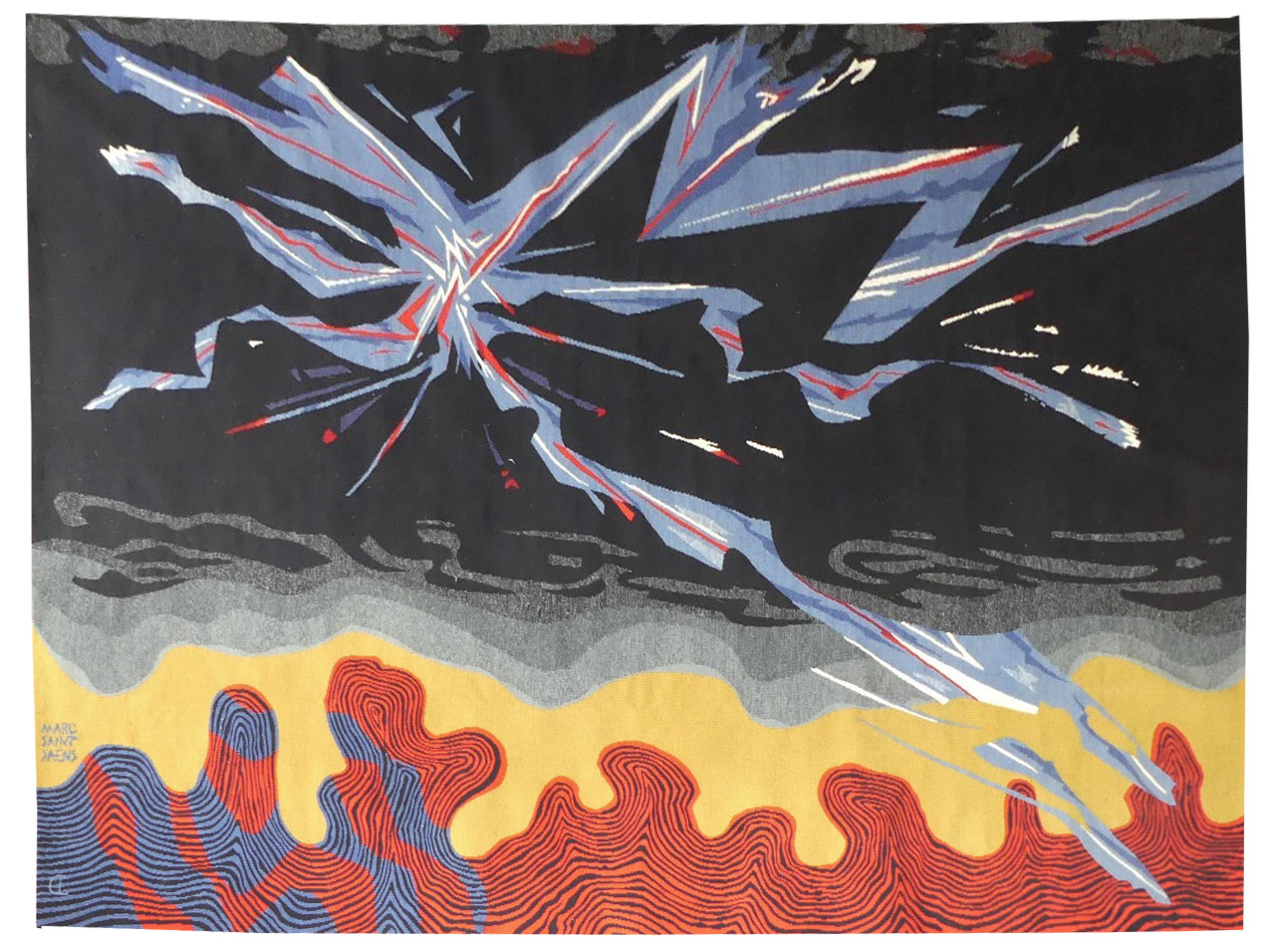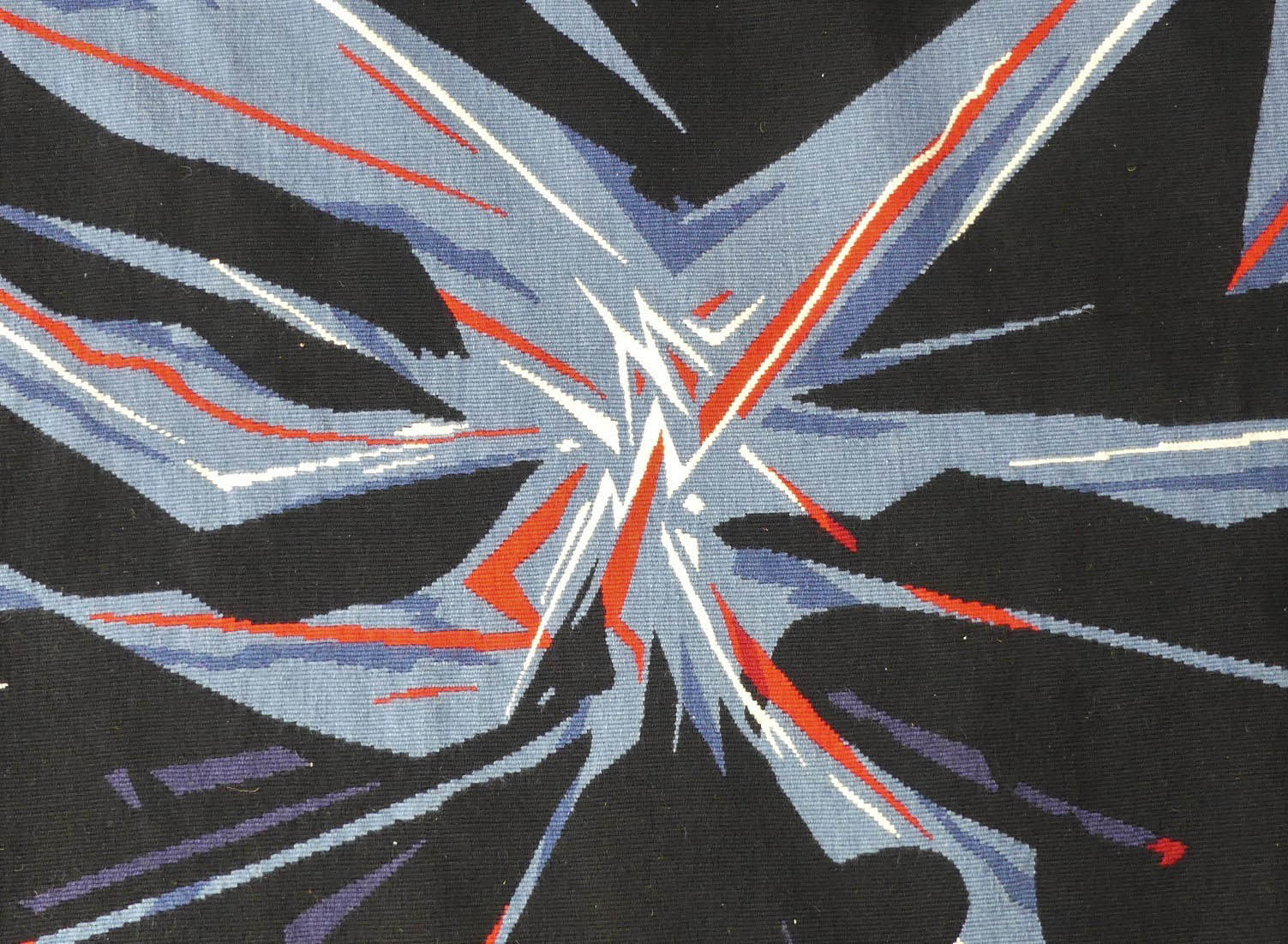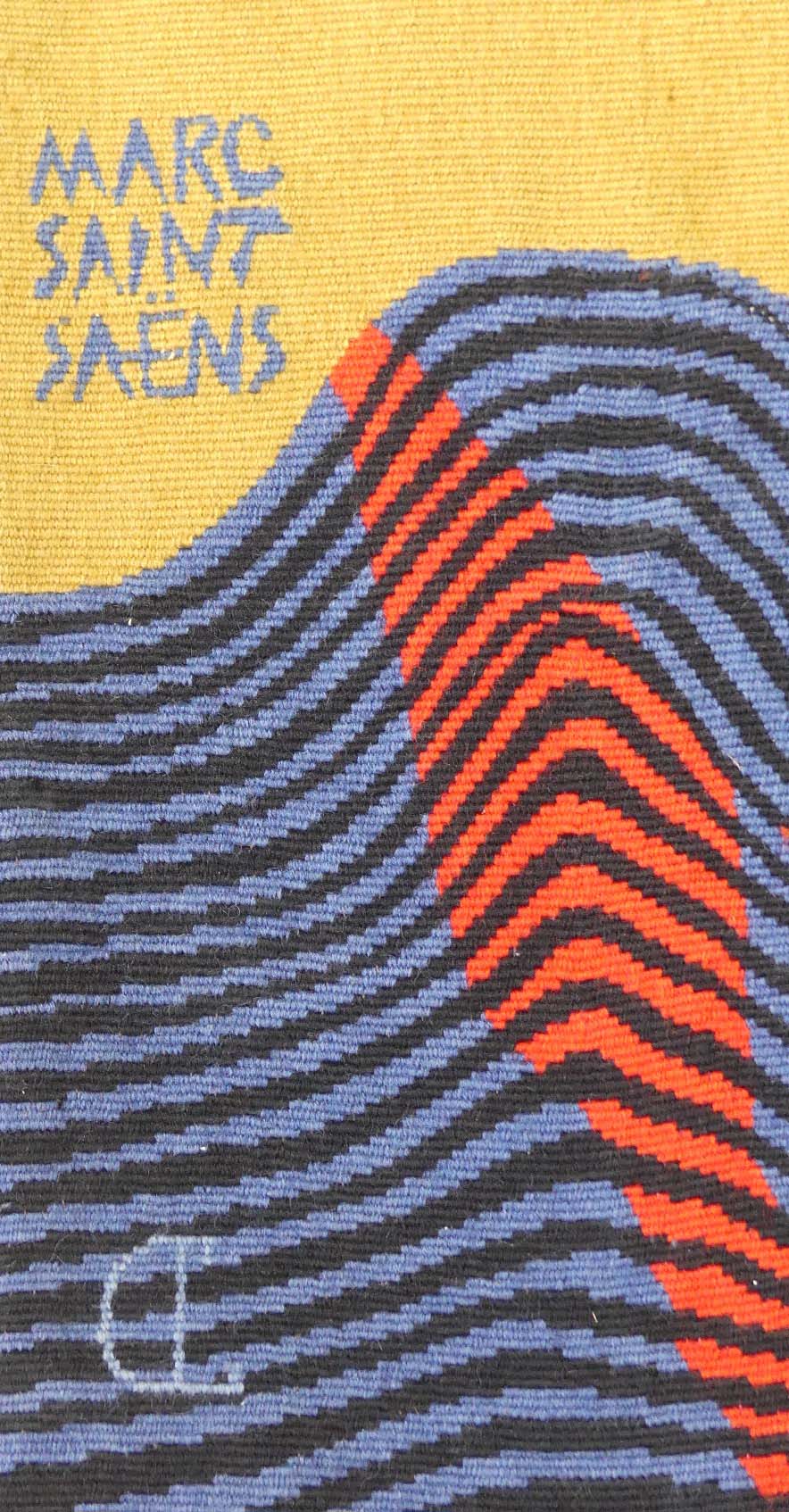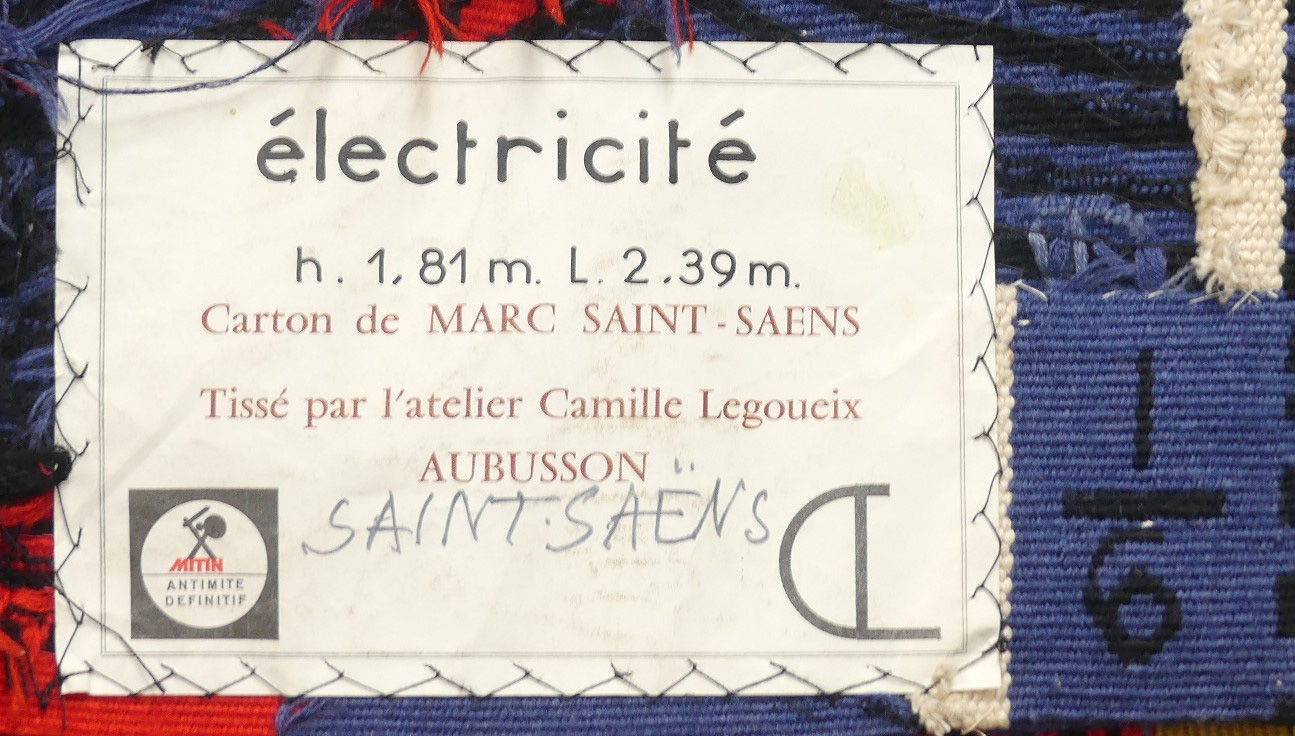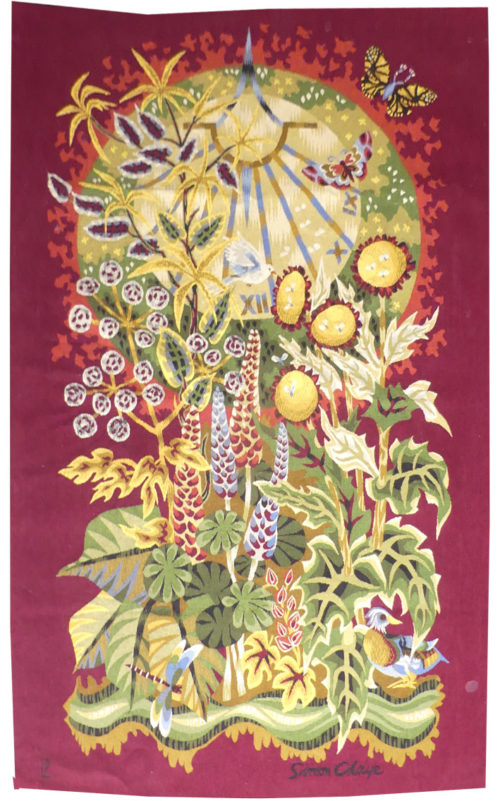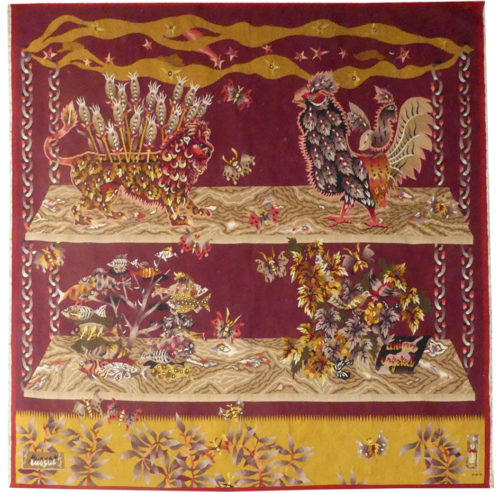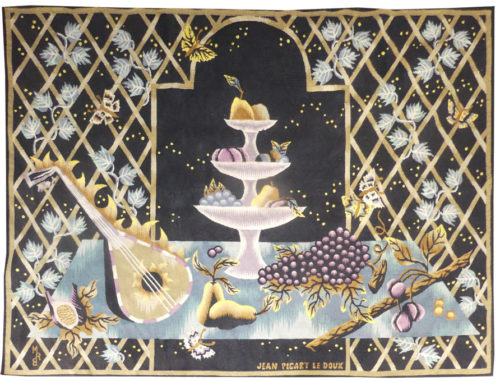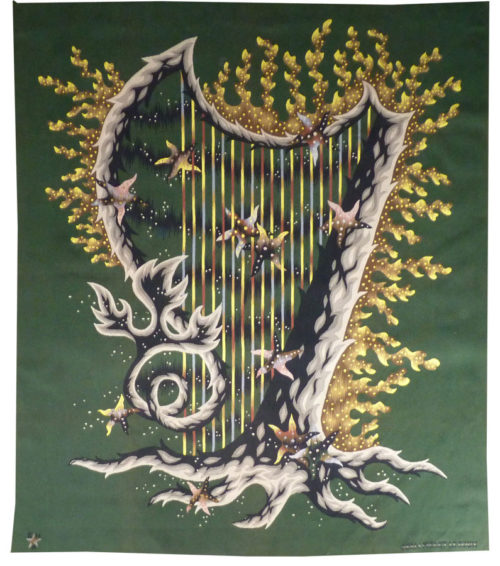Eléctricité (electricity)
Aubusson tapestry woven by the Legoueix workshop.
With signed label, n°1/6.
1970.
Lurçat approached Saint-Saëns, originally a painter of murals, in 1940. And during the war the latter produced the first of his allegorical masterpieces,
tapestries reflecting indignation, combat, resistance : “les Vierges folles (the foolish virgins), “Thésée et le Minotaure” (Theseus and the Minotaur). At the end of the war, as a natural development he joined up with Lurçat, whose convictions he shared (concerning a simplified palette, outlined cartoons with colours indicated by pre-ordained numbers, and the specific nature of tapestry design…) at the A.P.C.T. (Association des Peintres-cartonniers de Tapisserie). His universe, where the human figure, stretched, elongated, ooccupies an important place (particularly when compared to his companions Lurçat or Picart le Doux), pivots around traditional themes : woman, the Commedia dell’arte, Greek mythology… refined by the brilliance of the colours and the simplification of the layout. His work would evolve later, in the 1960’s, towards cartoons of a more lyrical design, almost abstract where elemental and cosmic forces would dominate.
« Lightning » [another title for this cartoon] … bears witness to a new departure for Saint-Saëns, already visible in the 1960’s ; an evocation of cosmic forces [or rather as in this case , physical phenomena] not so much suggested by the drawing’s precision so much as by the strident colours employed…. This tapestry was used for the poster advertising the inauguration of the Aérospatiale Cultural Centre in Toulouse in 1971 » according to Michel Heng, in the exhibition catalogue for the Saint-Saëns exhibition in Aubusson.
Bibliography :
Exhibition catalogue Saint-Saëns, oeuvre tissé, Aubusson, Musée départemental de la Tapisserie, 1987, ill. p.47
Exhibition catalogue Marc Saint-Saëns, tapisseries, 1935-1979, Angers, Musée Jean Lurçat et de la Tapisserie Contemporaine, 1997-1998


